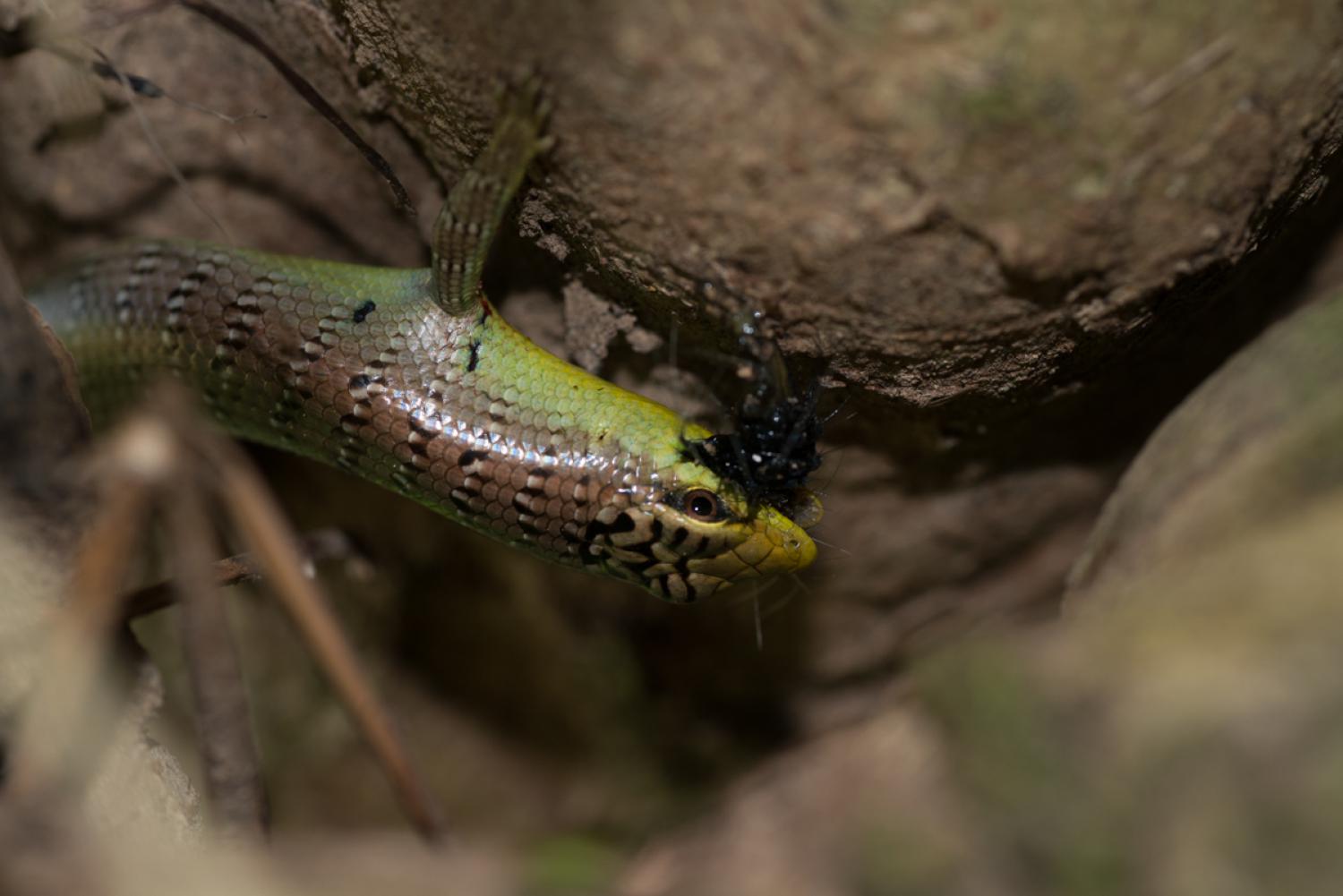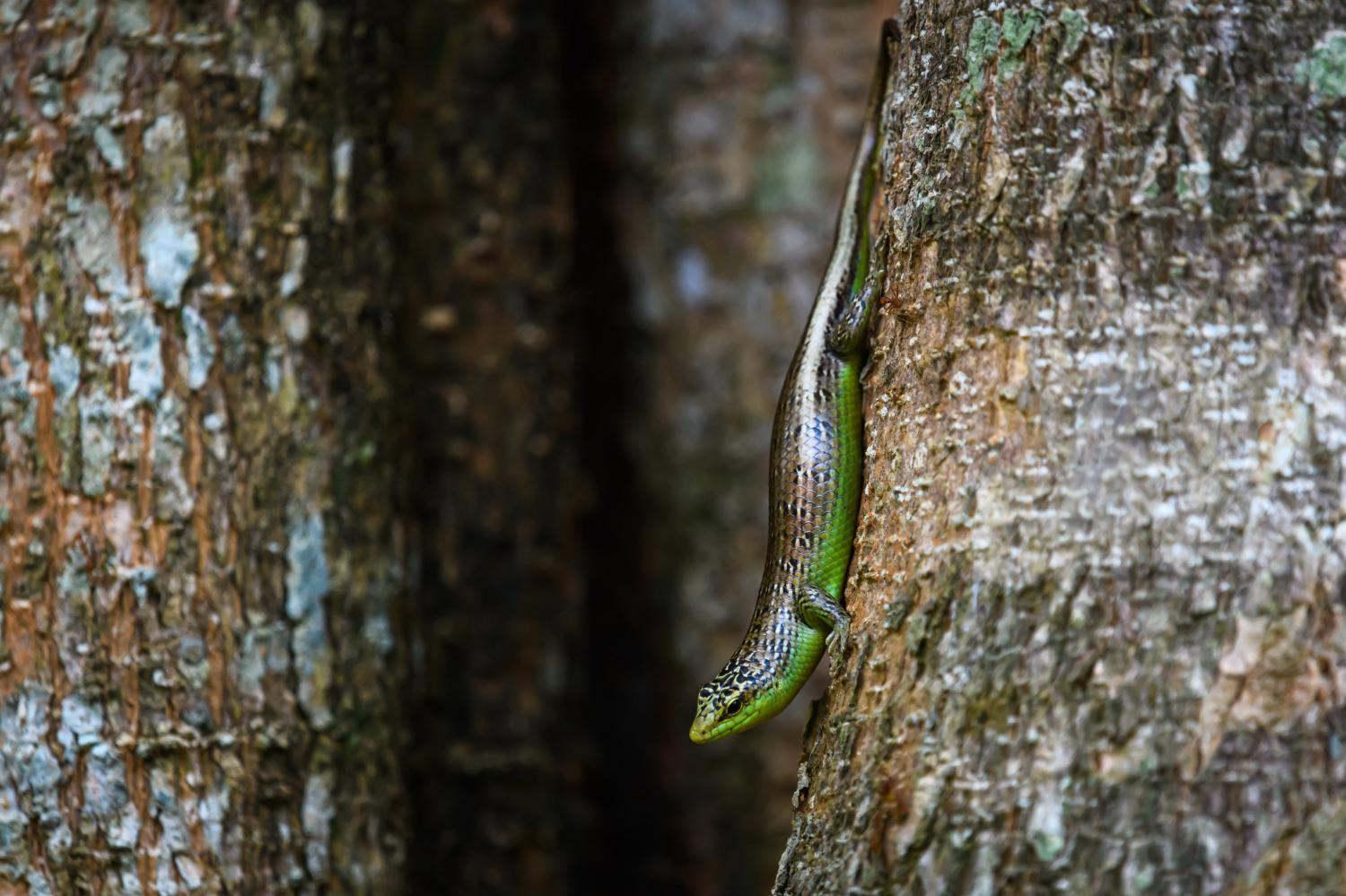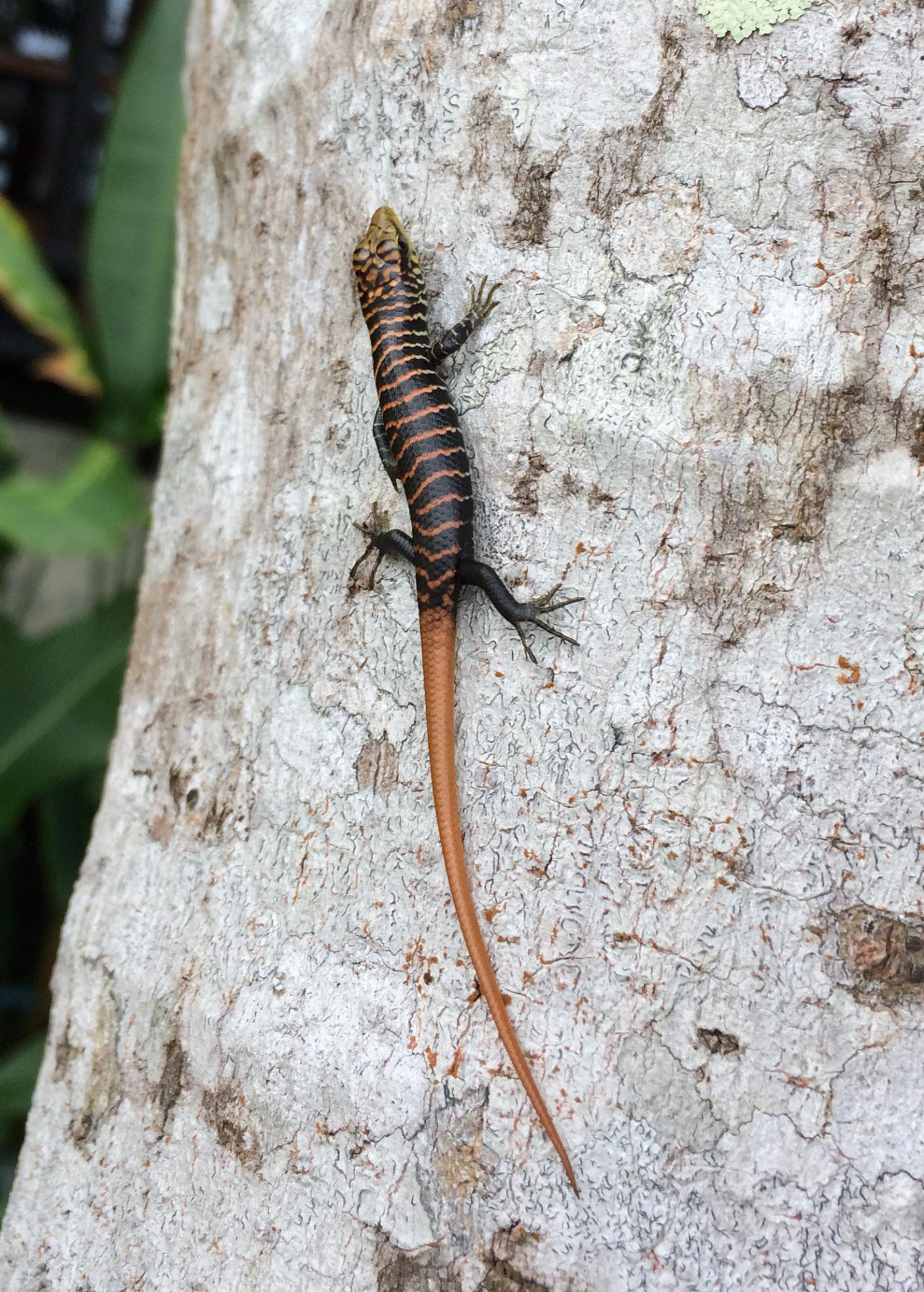Species of Thailand
Olive tree skink
Dasia olivacea
John Edward Gray, 1839
In Thai: จิ้งเหลนต้นไม้
Dasia olivacea, the olive dasia or olive tree skink, is a species of skink native to Southeast Asia.
Distribution
Dasia olivacea is found south of approximately 15° north in Southeast Asia, including parts of Myanmar, Thailand, Viet Nam, Laos, Malaysia and Singapore as well as throughout the island of Borneo, on Java, Sumatra and nearby Indonesian islands, and the Indian Andaman and Nicobar Islands. It is known from a single locality in Cambodia. The northernmost locality for D. olivacea is the Sakaerat Environmental Research Station in the Nakhon Ratchasima Province of eastern Thailand.
Ecology and conservation
Dasia olivacea lives almost exclusively in trees, only rarely descending to nest or to move between trees. Eggs may be laid more than once per year, in clutches of up to 14 eggs; incubation lasts 69 days. Because it is very widespread and ecologically flexible, D. olivacea is considered to be a species of Least Concern on the IUCN Red List.
Taxonomy
Dasia olivacea was first described by John Edward Gray in an 1839 publication in the Annals of Natural History, as the type species of the new genus Dasia. The type locality was "Prince of Wales Island" (now Penang Island).
Description
Mature individuals of Dasia olivacea have a green back, with bronze scales towards the flanks and 12 bands of ocelli (eye-like spots) reaching from side to side. The head is primarily a dark olive-green colour with black markings; the underside of the head is a bluish to yellowish green.
This article uses material from Wikipedia released under the Creative Commons Attribution-Share-Alike Licence 3.0. Eventual photos shown in this page may or may not be from Wikipedia, please see the license details for photos in photo by-lines.
Scientific classification
- Kingdom
- Animalia
- Phylum
- Chordata
- Class
- Reptilia
- Order
- Squamata
- Suborder
- Lacertilia
- Family
- Scincidae
- Genus
- Dasia
- Species
- Dasia olivacea
Common names
- German: Olivfarbener Baumskink
- English:
- Olive tree skink
- Olive dasia
- Thai: จิ้งเหลนต้นไม้
Conservation status

Least Concern (IUCN3.1)
Photos
Please help us review our species pages if wrong photos are used or any other details in the page is wrong. We can be reached via our contact us page.
Range Map

- Betong District, Yala
- Hala-Bala Wildlife Sanctuary
- Huai Kha Khaeng Wildlife Sanctuary
- Kaeng Krachan National Park
- Khao Lak - Lam Ru National Park
- Khao Phra Thaeo Wildlife Sanctuary
- Khao Sok National Park
- Khao Yai National Park
- Ko Chang District, Trat
- Ko Chang National Park
- Ko Lanta District, Krabi
- Ko Samui District, Surat Thani
- Kui Buri National Park
- Mueang Phuket District, Phuket
- Phi Phi Islands
- Tarutao National Marine Park
- Tha Mai District, Chanthaburi
- Thalang District, Phuket
- Ton Nga-Chang Wildlife Sanctuary



